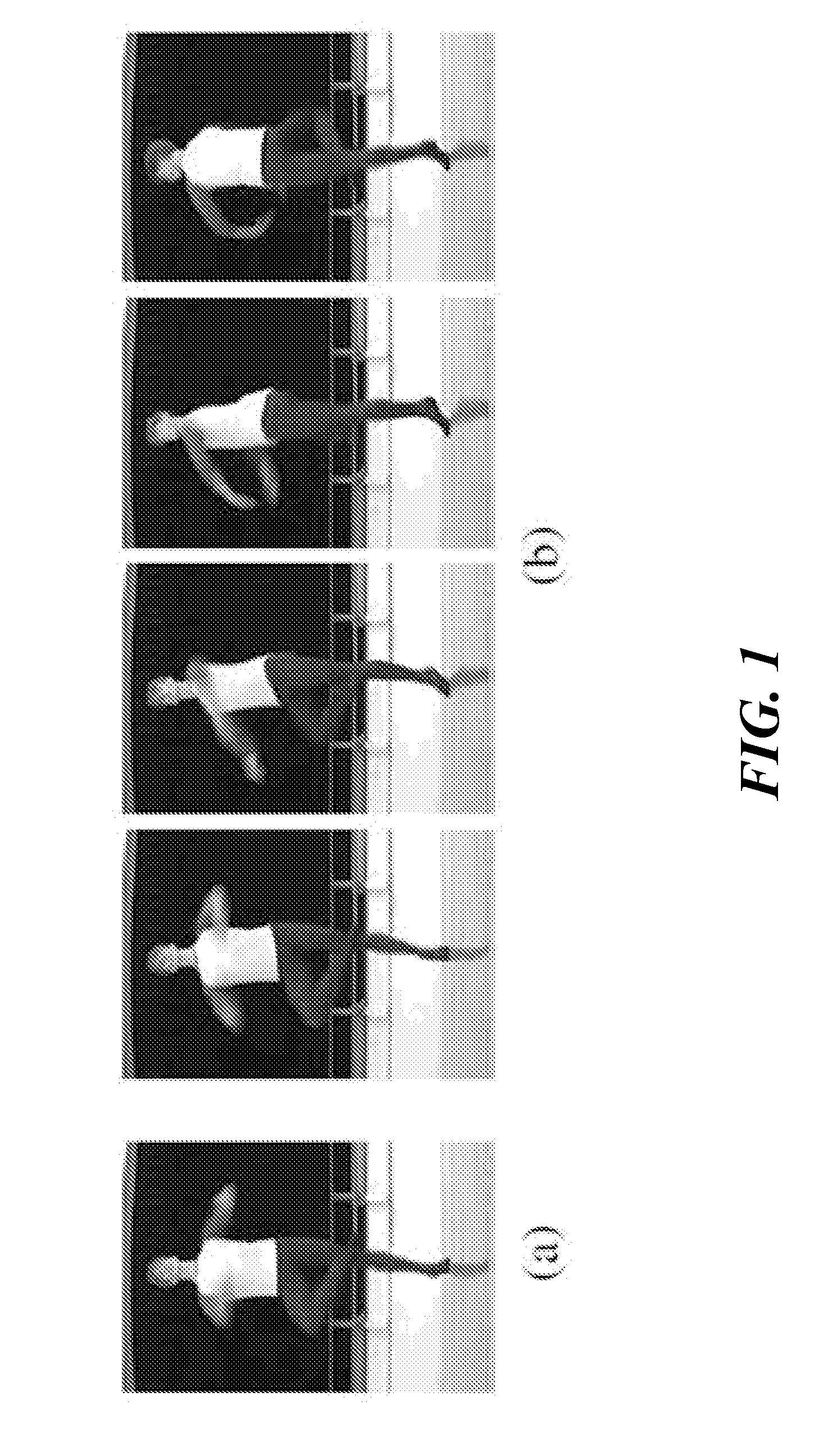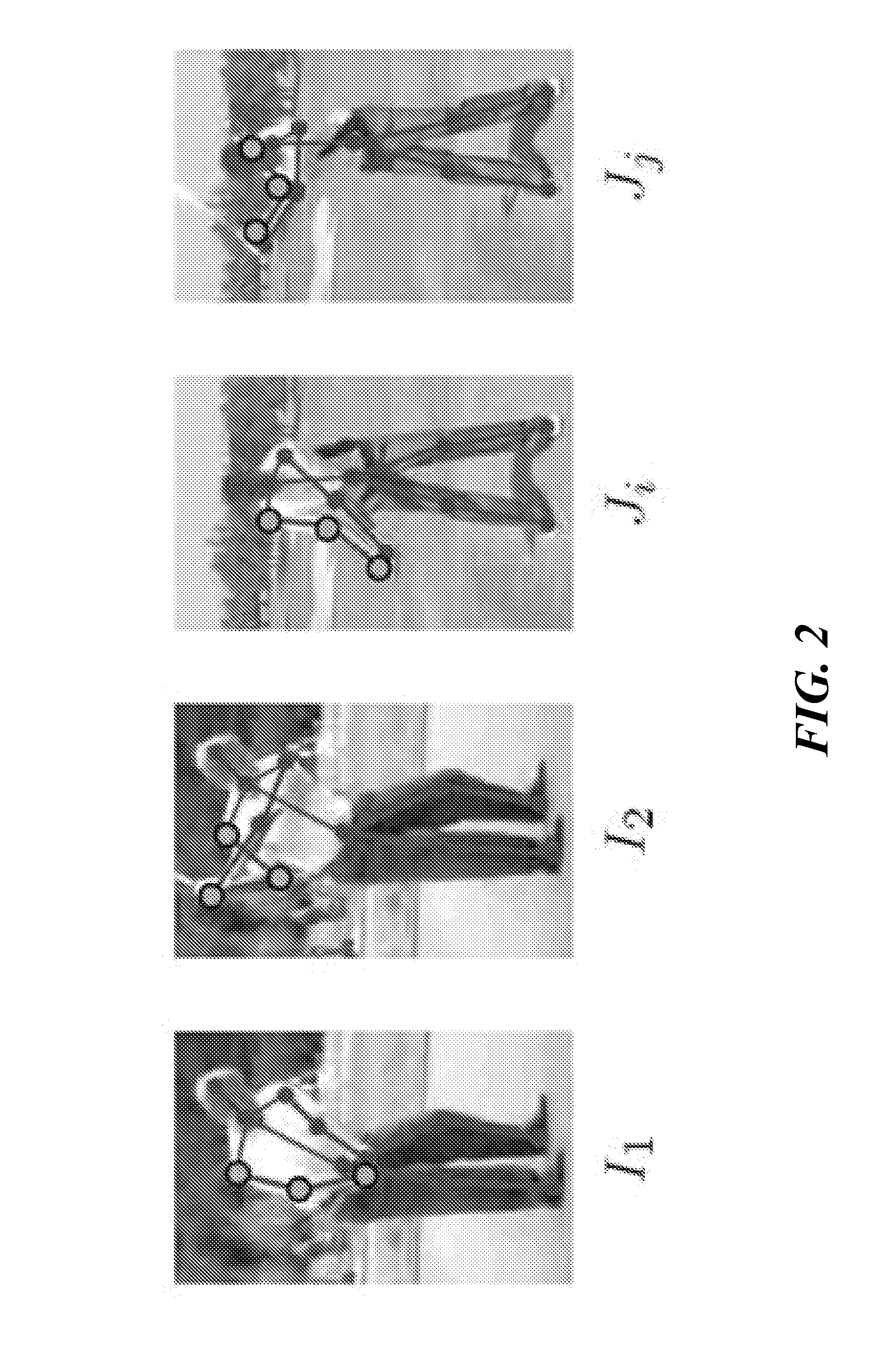Methods for recognizing pose and action of articulated objects with collection of planes in motion
- Summary
- Abstract
- Description
- Claims
- Application Information
AI Technical Summary
Benefits of technology
Problems solved by technology
Method used
Image
Examples
Embodiment Construction
[0050]Referring now to the drawings, the preferred embodiment of the present invention will be described. The invention comprises an improved system, method, and computer-readable instructions for recognizing pose and action of articulated objects with collection of planes in motion.
[0051]An embodiment of the method starts with a video sequence and a database of reference sequences corresponding to different known actions. The method identifies the sequence from the reference sequences such that the subject in performs the closest action to that observed. The method compares actions by comparing pose transitions. Since action can be regarded as a sequence of poses, a straightforward approach to match two actions is to check the pose-to-pose correspondences. Two same body poses observed by different cameras are related by epipolar geometry via the fundamental matrix, which provides a constraint to match the two poses, regardless of camera calibration matrices or viewpoints.
[0052]The ...
PUM
 Login to View More
Login to View More Abstract
Description
Claims
Application Information
 Login to View More
Login to View More - R&D
- Intellectual Property
- Life Sciences
- Materials
- Tech Scout
- Unparalleled Data Quality
- Higher Quality Content
- 60% Fewer Hallucinations
Browse by: Latest US Patents, China's latest patents, Technical Efficacy Thesaurus, Application Domain, Technology Topic, Popular Technical Reports.
© 2025 PatSnap. All rights reserved.Legal|Privacy policy|Modern Slavery Act Transparency Statement|Sitemap|About US| Contact US: help@patsnap.com



